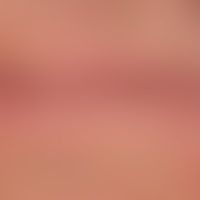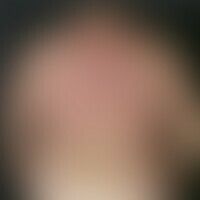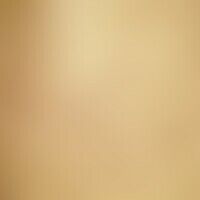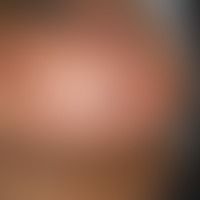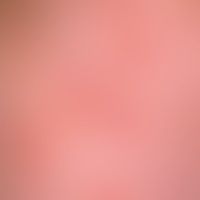Image diagnoses for "Plaque (raised surface > 1cm)"
586 results with 2919 images
Results forPlaque (raised surface > 1cm)
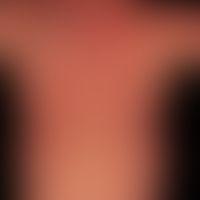
Rowell's syndrome L93.1
Rowell's syndrome: acute "multiform" exanthema in subacute cutaneous lupus erythematosus.
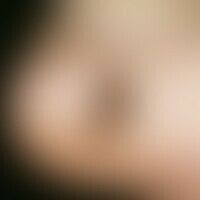
Nevus melanocytic congenital D22.-
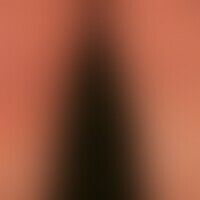
Keratosis lichenoides chronica L85.8
Keratosis lichenoides chronica: generalized eminently chronic, moderately itchy clinical picture with reddish, firm, papules and plaques with scaling.

Leprosy (overview) A30.9
Leprosy (overview): Borderlinelepromatous leprosy (BB), plaques and dome-shaped punch-out lesions.
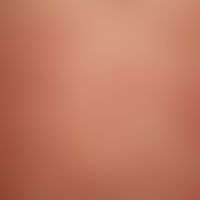
Pemphigoid gestationis O26.4
Pemphigoid gestationis. itchy, since 4 weeks existing exanthema with multiple, generalized, symmetric, truncated, large red plaques with isolated, bulging blisters. picture reminds of an erythema exsudativum multiforme.

Balanitis plasmacellularis N48.1
Balanitis plasmacellularis: chronic balanitis in a 62 year old patient. no other skin diseases known. no diabetes mellitus. slight urinary incontinence in case of prostate hyperplasia. sharply defined, slightly raised red plaque. no significant symptoms.
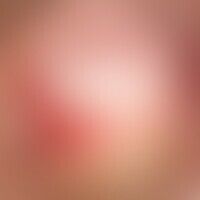
Ain D48.5
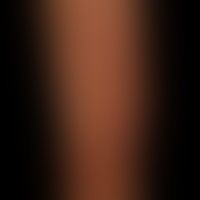
Hypertrophic Lichen planus L43.81
Lichen planus verrucosus: a hypertrophic lichen planus with pseudoepitheliomatous epithelial hypertrophy and scarring that has been present for several years.

Tinea corporis B35.4
Tinea corporis. multiple, chronically active, grouped, 0.5-10.0 cm large (or larger), isolated and confluent, moderately to distinctly itchy, slightly rimmed, rough, scaly bright spots (and plaques). slow growth of single florets.
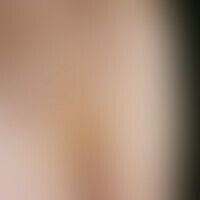
Primary cutaneous follicular lymphoma C82.6
Primary cutaneous follicular center lymphoma: chronically active, increasing for 12 months, localized on the trunk and upper extremities, disseminated, 0.3-0.7 cm in size, asymptomatic, hemispherical, firm, smooth, red papules and nodes.

Ringworm B35.2
For a long time now, this large, "well-cared for", low-consistency, borderline, sometimes itchy plaque (interval-like local treatment with corticosteroids) has existed in the 42-year-old patient.
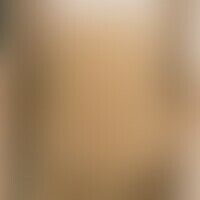
Erythrokeratodermia progressive symmetrica Q82.8
Erythrokeratodermia progressiva symmetrica. extensive, sharply defined, brown-yellow discoloured, scaly and hardened plaques existing since the 2nd LJ, which had already appeared on other parts of the trunk, but healed there in the meantime. occasional slight itching.
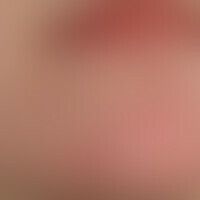
Lichen sclerosus extragenital L90.0
Lichen sclerosus extragenitaler: Progressive lichen sclerosus for 2 years with a clearly sunken scarring of the lower lip and chin; surrounding, flat, blurred, clearly consistent plaque with a red-white coloration in the chin area (here the clinical features of the lichen sclerosus are visible).

Eosinophilic cellulitis L98.3
Cellulitis eosinophil: acute formation of circumscribed, large, sharply margined plaques, the surface of which may have an orange peel-like texture.
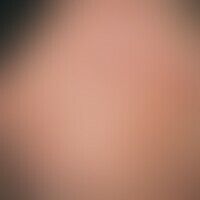
Psoriasis seborrhoic type L40.8
Psoriasis seborrhoeic type: Chronic recurrent, sharply defined, flat, rough, partly with yellowish scaling, bordering, red spots and plaques.

Psoriasis (Übersicht) L40.-
psoriasis: here partial manifestation of a generalised psoriasis. plaques, papules, papulo-pustules. massive, in places weeping scale overlays. no pre-treatment.
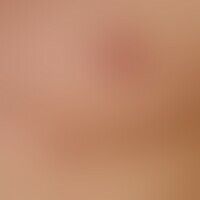
Nipple accessory Q83.3
Mammilla, accessory. 0.6 cm high, solitary, brown plaque, clearly grown during puberty, localized in the so-called embryonic lactiferous ridge, without symptoms, with a central pointed conical papule and a coarse-fielded surface.

Localized Cutaneous Nodular Amyloidosis E85.8
Amyloidosis cutis nodularis atrophicans: Solitary, soft, brownish-yellowish nodule on the nostril (histologically confirmed as amyloidosis cutis) in a 27-year-old man without clinically detectable systemic amyloidosis.
